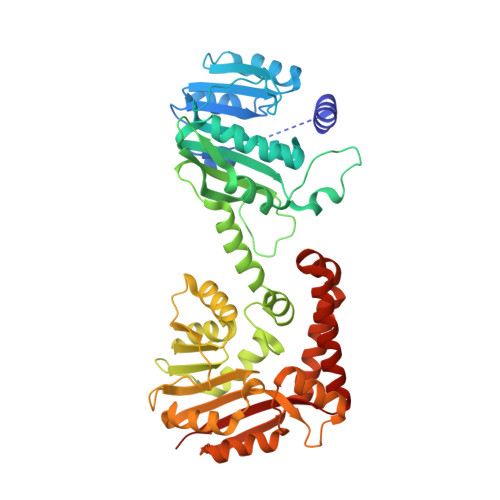Conformational changes in the di-domain structure of Arabidopsis phosphoethanolamine methyltransferase leads to active-site formation.
Lee, S.G., Jez, J.M.(2017) J Biol Chem 292: 21690-21702
- PubMed: 29084845
- DOI: https://doi.org/10.1074/jbc.RA117.000106
- Primary Citation of Related Structures:
5WP4, 5WP5 - PubMed Abstract:
Phosphocholine (pCho) is a precursor for phosphatidylcholine and osmoprotectants in plants. In plants, de novo synthesis of pCho relies on the phosphobase methylation pathway. Phosphoethanolamine methyltransferase (PMT) catalyzes the triple methylation of phosphoethanolamine (pEA) to pCho. The plant PMTs are di-domain methyltransferases that divide the methylation of pEA in one domain from subsequent methylations in the second domain. To understand the molecular basis of this architecture, we examined the biochemical properties of three Arabidopsis thaliana PMTs (AtPMT1-3) and determined the X-ray crystal structures of AtPMT1 and AtPMT2. Although each isoform synthesizes pCho from pEA, their physiological roles differ with AtPMT1 essential for normal growth and salt tolerance, whereas AtPMT2 and AtPMT3 overlap functionally. The structures of AtPMT1 and AtPMT2 reveal unique features in each methyltransferase domain, including active sites that use different chemical mechanisms for phosphobase methylation. These structures also show how rearrangements in both the active sites and the di-domain linker form catalytically competent active sites and provide insight on the evolution of the PMTs in plants, nematodes, and apicomplexans. Connecting conformational changes with catalysis in modular enzymes, like the PMT, provides new insights on interdomain communication in biosynthetic systems.
Organizational Affiliation:
From the Department of Biology, Washington University in St. Louis, St. Louis, Missouri 63130.















